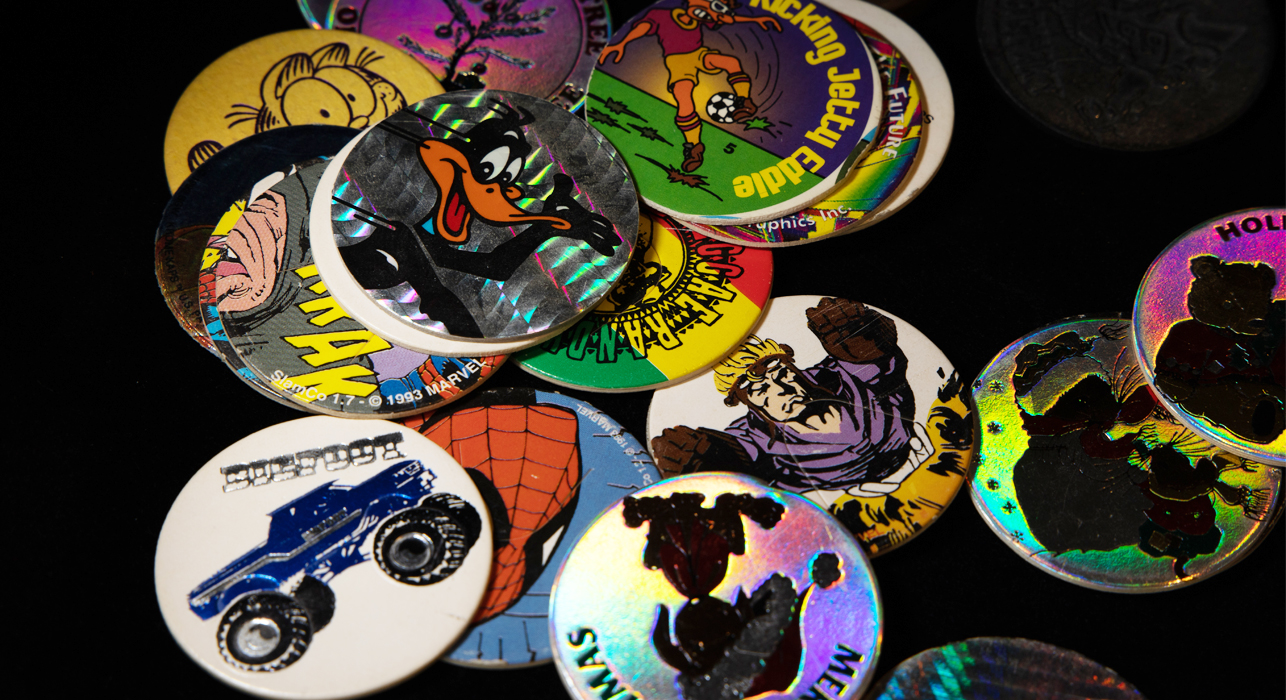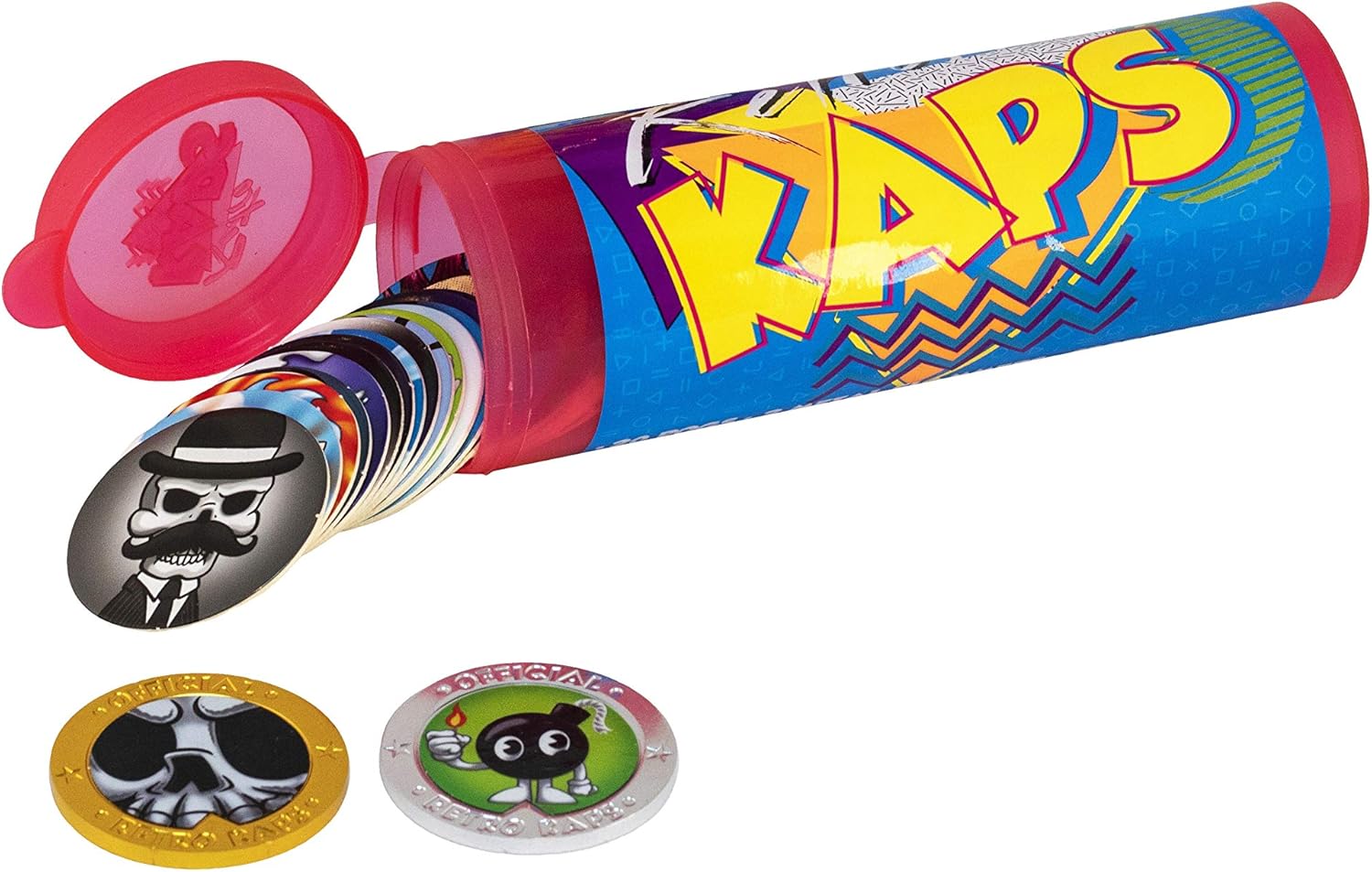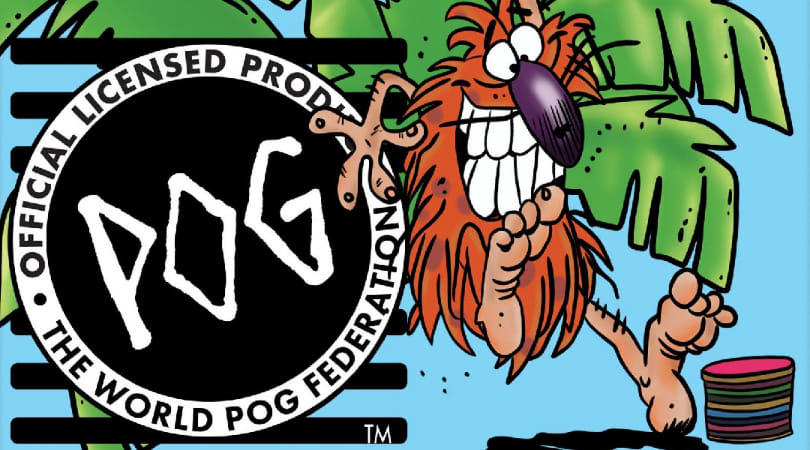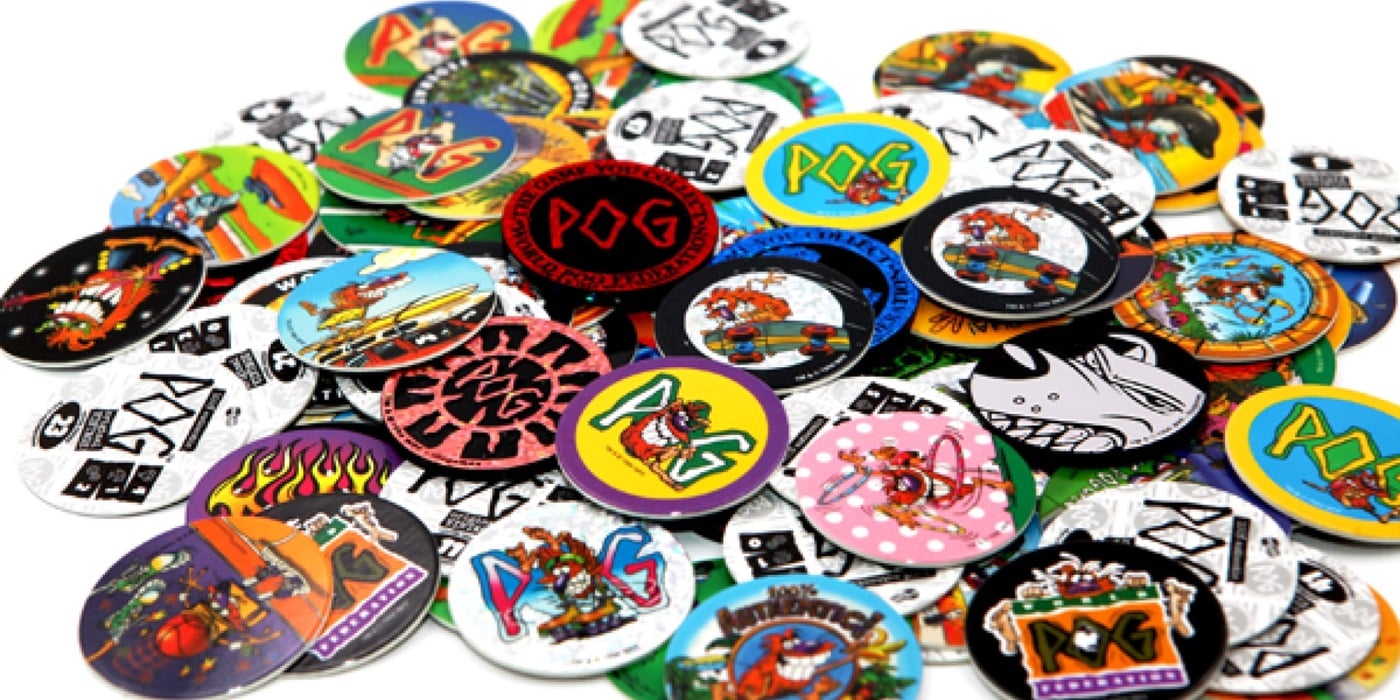Do you remember POGs? Ever wonder where that game came from and just what a pog is? Also, how’s your back? I can help with two of the three.
Time travel with me back to the mid-to-late nineties, when we collected and played with little cardboard disks known as “POGs.” It was a simpler time. Coming in virtually every design imaginable, your POGs could be as unique as elementary-school-you was. And don’t even get me started on the slammers. But what was this game? Where did it come from? And how did it become such an icon and craze of the mid nineties?
POGs
Also known as ‘Milk Caps,’ POGs is a children’s game of stacking and de-stacking circular cardboard ‘milk caps.’ Players would stack up towers of POGs and take turns attempting to knock them over. Winners are judged by who can claim the most turned-over disks. As far as games go, it was simple and fast.
POGs was also a novel combination of collectible but impossible to complete. Once the game took off, everyone was making their own milk caps with their own art of characters on them. Unlike collectible card games, it would be impossible to make and complete a complete collection of every POG. And honestly, nobody had any interest.
Instead, players were more incentivized to collect POGs that related in some way to their interests or experiences. For example, I remember buying a set from Medieval Times that featured princesses and knights and never finding a set like it anywhere else.
READ MORE: One and Done: The Ultimate ‘UNO’ Explainer
“POGs” as a toy were trademarked by the World Pog Federation, despite a 1994 lawsuit claiming that the term was generic and selected by the children who played the game. This suit was won by the Word Pog Association as their exclusive term.
The History of POGs
A similar game called Menko has existed in Japan since the 17th century. In Menko, players will throw down one of their cards and attempt to use it to flip the other player’s card. And the end of the game, the one with the most cards wins. Back in the Edo period, the pieces used were baked clay instead of paper.
The game likely came from Japan and eventually a more modern version of ‘Milk Caps’ was started in Maui, Hawaii in the 1920s or 30s. The game used the cardboard milk-caps that you could once find in milk bottles. But in the 1950s new milk packaging made these caps obsolete.
Sometimes companies would distribute milk caps as a throw-back promotional item. And that’s how the caps came to be associated the Haleakala Dairy and Orchards’s new pineapple, orange, guava juice in 1971. The juice was known by its acronym, POG.
Pog juice caps led to a surge in popularity of the milk cap style game, and collecting. But it wasn’t until Haleakala expanded to the more populated island of Oahu that the game’s revival really took off. And the juice’s name became quickly associated with and used for the game.
The game spread to the mainland USA through California. And before long, it had become a national phenomenon.
How to Play
The basic, agreed-upon POGs rules are simple and players need just two things. First, of course, a whole bunch of POGs or milk caps. Second, each player will need a slammer, or a thicker and heavier POG. Typically, slammers were either made of metal or plastic. Some games wouldn’t allow metal because their heft gave an unfair advantage or damaged POGs.
With both of those things acquired, players contribute an equal number of caps (or pogs) and build a tall stack. Then the players take turns throwing their slammer down onto the top of the stack, causing the caps to scatter and flip. The player would collect any caps that had flipped over, and the unflipped caps would be used to re-stack the tower. Players took turns doing this back and forth until no POGs remained, and whoever had the most in their possession was the winner.
Controversy and Banning
In some games, children would keep the caps won from other players even after the game had wrapped up. This resulted in many school districts considering playing POGs a form of gambling. To make the situation worse, a combination of losing their caps and the competitive nature of the game, they became the source of classroom disruptions and playground fights. Milk cap games were banned from many schools across North America as well as Australia and Sweden.
Are POGs Still Around?
Not really. At least, they’re not in mass production or being played, but there are many listings for milk caps you can purchase right now. By 1998 the POGs craze has fizzled to nothing and the caps weren’t bought or played anymore, leaving the World Pog Federation to shutter. Canada Games, who had been printing and supplying the original caps for Haleakala Dairy and Orchards pog juice went out of business in 1997. Now, POGs by and large live only in our memories and in the boxes of childhood junk our moms refuse to throw away for some reason.
Did you play POGs? Do you remember a standout favorite? Did you play for keeps or did everyone get their caps back? And most importantly, did you allow metal slammers? Let us know in the comments!
Happy adventuring!
Subscribe to our newsletter!
Get Tabletop, RPG & Pop Culture news delivered directly to your inbox.
Don’t Miss:
Read more at this site




